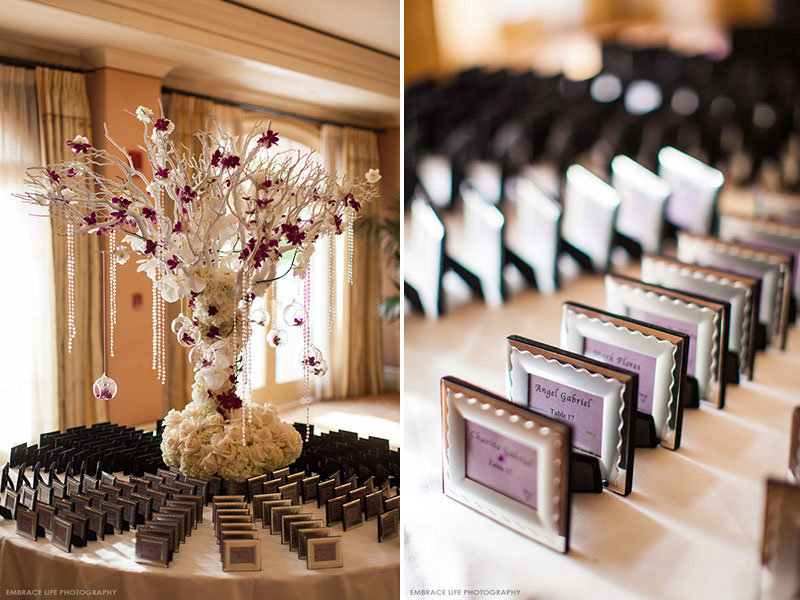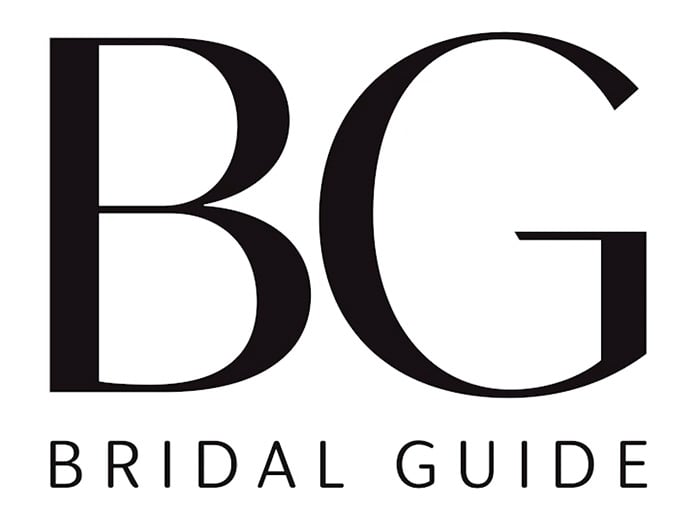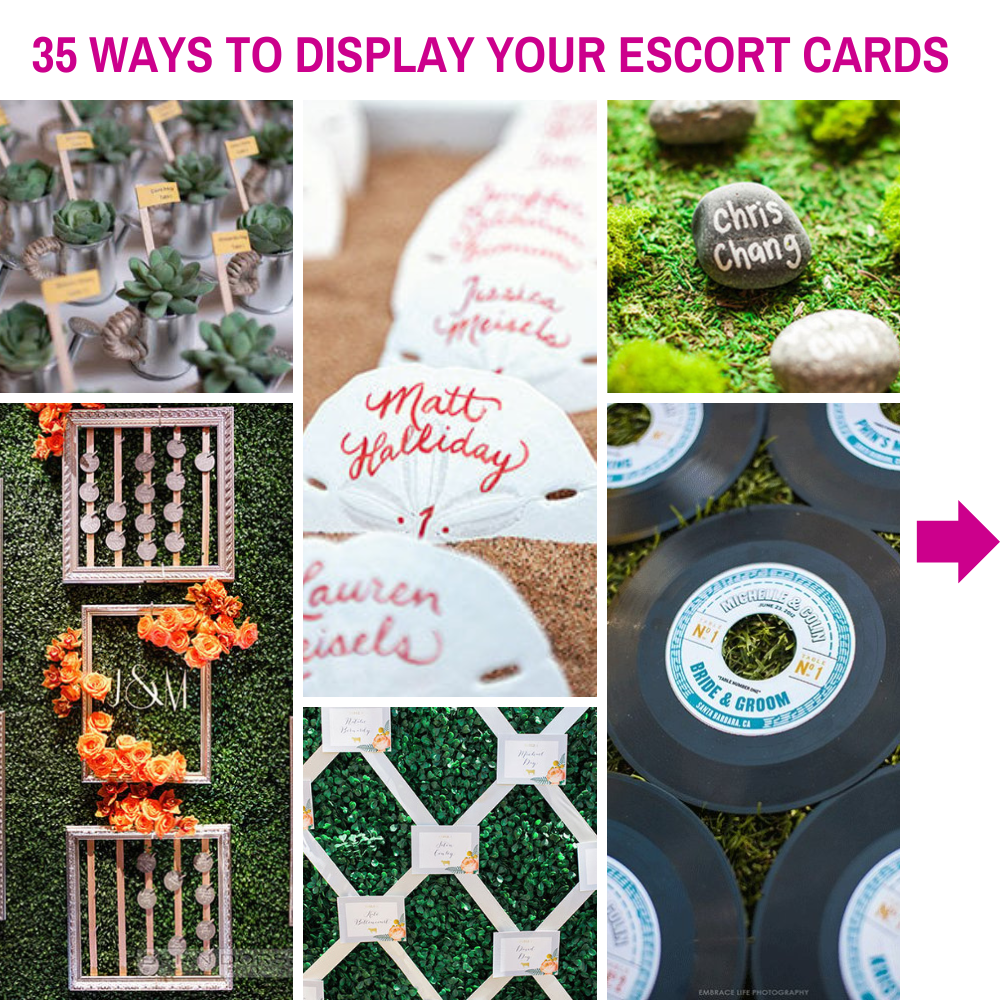Confused about escort cards, wedding place cards, and seating charts? Our guide breaks down each option, offering creative ideas and practical advice.
By: Bridal Guide
Planning a wedding can sometimes feel like you're learning an entirely new language. When it comes to planning your reception seating, terms like "escort cards," "place cards," and "seating charts" begin to swirl in your head. Are they all the same? Do you need all three? Which one is right for your big day?
Short answers: No, they are not all the same, and no, you don't need all three! The good news is, understanding their differences and functions is simpler than you think, and choosing the right option will ensure your reception flows beautifully and your guests feel right at home.
Let's clear up the confusion and help you decide on the perfect seating strategy for your wedding.
Understanding the Basics: What's the Difference?
While they all serve the purpose of guiding your guests, escort cards, place cards, and seating charts each have a distinct role. Think of them as different tools in your guest management toolkit.
Escort Cards: Guiding Guests to Their Tables
Imagine your guests arriving at your reception, ready to celebrate. An escort card is what they'll look for first. Its primary job is to tell a guest which table they're assigned to.
Typically, escort cards are displayed at the entrance to your reception space – perhaps on a beautifully decorated table, a hanging display, or a wall. Each card usually has a guest's name (or couple's name) and their assigned table number. Guests pick up their card, find their table number, and then head off to find their designated table.
Think of it this way: an escort card is like a movie ticket that tells you your theater number. Once you're in the theater, you can often pick any open seat within that specific space. Similarly, with escort cards, guests are free to choose any available seat at their assigned table once they get there. This gives them a little flexibility to sit next to friends or family within their assigned group.
Place Cards: Marking Each Specific Seat
Once guests have found their assigned table, a place card takes over if you want to direct them to an exact seat. A place card is a small card, often tented or flat, placed directly at each guest's individual setting at the table. It has only one name on it, indicating precisely where that person should sit.
A place card's function is to mark an assigned seat at a specific table. If you've ever attended a formal dinner or a very large event with a strict seating plan, you've likely seen place cards.
Think of it like a name tag on a specific chair. This level of detail means you've thoughtfully planned not just who sits at which table, but who sits next to whom.
Seating Charts: The Grand Overview
A seating chart offers a comprehensive, at-a-glance view of your entire reception seating plan. Instead of individual cards, it's a large, single display – it could be a framed print, a beautifully calligraphed mirror, a large chalkboard, or a wooden sign.
The seating chart lists all your guests' names and their corresponding table assignments. It can be organized alphabetically by guest name, or by table number with the names of guests at each table listed underneath. Guests find the chart, locate their name, see their table number, and then proceed to that table.
The key difference here is that there's no physical card for guests to take. They simply read the chart and then head to their table. This option is particularly popular for its visual impact and often becomes a beautiful focal point at the reception entrance.
Which Option is Right for Your Wedding? Choosing Your Seating Strategy
Now that you know the difference, how do you decide which approach is best for your celebration? Each option has its unique advantages depending on your wedding style, guest count, and desired level of control.
When to Choose Escort Cards:
Escort cards are a fantastic choice for many weddings, offering a good balance between guidance and guest freedom.
Pros:
- Guest Flexibility: Allows guests to choose their specific seat at their assigned table. This can be great for groups who want to huddle up together.
- Personal Touch: Each card can be a small, memorable keepsake, especially if you get creative with the design.
- Visual Display: They can be arranged in incredibly creative and beautiful ways, adding to your reception decor.
- Manages Flow: Directs guests efficiently without the bottleneck of a single chart for very large groups.
Cons:
- Requires a dedicated table or display area.
- Guests might misplace their card before getting to the table.
Best For:
- Medium to large weddings (over 75-100 guests).
- Weddings where you want to assign tables but not specific seats.
- Couples looking for an interactive or decorative element at the reception entrance.
When to Choose Place Cards:
Place cards offer the most detailed level of control over your seating plan.
Pros:
- Absolute Control: Ensures specific individuals sit next to each other, which is invaluable for managing family dynamics, ensuring comfortable conversation pairings, or strategically placing VIPs.
- Dietary Needs: Essential for indicating specific meal choices or allergies directly at each guest's setting.
- Formal Aesthetic: Creates a very polished and intentional look at each table setting.
Cons:
- Most Planning Intensive: Requires meticulous attention to detail for every single guest.
- Less Flexible: Once placed, guests are expected to sit exactly where assigned.
- Can feel restrictive for some guests if they prefer more freedom.
Best For:
- Smaller, more intimate weddings where precise guest pairings are critical.
- Formal multi-course seated dinners.
- When you have complex dietary requirements for many guests.
- Often used in conjunction with escort cards or a seating chart (guests find their table via an escort card or chart, then their specific seat via a place card).
When to Choose a Seating Chart:
Seating charts are a grand and practical option, especially for larger celebrations.
Pros:
- Visually Striking: Can be a stunning piece of decor at your reception entrance.
- Eco-Friendly: No individual cards mean less paper waste.
- No Cards to Collect: Guests don't have to carry a card with them.
- Efficient for Large Groups: Everyone can see the full layout at once.
Cons:
- Can create a bottleneck if too many guests try to view it simultaneously, especially if not well-placed.
- Less personal than an individual escort card.
- Guests can't take anything home as a memento.
Best For:
- Large weddings where visual impact is desired.
- Weddings with a strong overall theme where the chart can contribute significantly to the decor.
- Couples who prefer a single, clear point of reference for all guests.
Practical Tips for Smooth Seating Success
Once you've decided on your preferred method, a few practical tips will ensure everything goes off without a hitch on your wedding day.
- Double-Check Names and Spelling: This is paramount! Go over your guest list and seating assignments with a fine-tooth comb. Misspelled names are a common, but easily avoidable, hiccup.
- Clear and Legible Design: Whatever you choose, ensure the names and table numbers are easy to read for all guests, especially those with varying eyesight.
- Logical Flow: If using escort cards or a seating chart, think about the flow of traffic. Place them in an obvious, non-congested area where guests can easily approach, find their names, and move along.
- Combine Strategies (If Desired): For a very formal wedding or if you have specific dietary needs, you might use escort cards to direct guests to their table, and then place cards at each setting to guide them to their precise seat and indicate meal choices.
- Delegate Setup: On the wedding day, ensure you have a trusted person (your wedding planner, coordinator, or a responsible family member) in charge of placing and arranging your seating elements exactly as planned.
- Consider Plus-Ones: Decide how you'll list plus-ones on cards or charts (e.g., "Ms. Jane Smith and Guest" or "Mr. John Doe and Ms. Emily Brown").
- Finalize Guest List Strategically: Your seating plan is one of the last things you'll finalize. Aim to get your RSVPs in a few weeks before the wedding to give yourself enough time for designing and printing.
- Plan for Last-Minute Changes: It's rare to have a wedding without a single last-minute RSVP change or no-show. Have a few blank escort/place cards on hand, or a flexible system in mind if you're using a chart.
- Coordinate with Your Venue: Let your venue know your seating plan in advance. They'll need to set up the tables accordingly.
Choosing between escort cards, place cards, and seating charts doesn't have to be a stressful decision. Each offers unique benefits and can be tailored to perfectly complement your wedding vision. Whether you opt for individual tokens of welcome or a grand visual display, the goal is the same: to ensure your guests feel celebrated, comfortable, and ready to enjoy every moment of your special day.
Happy planning, and may your seating arrangements be as beautiful and seamless as your love story!




